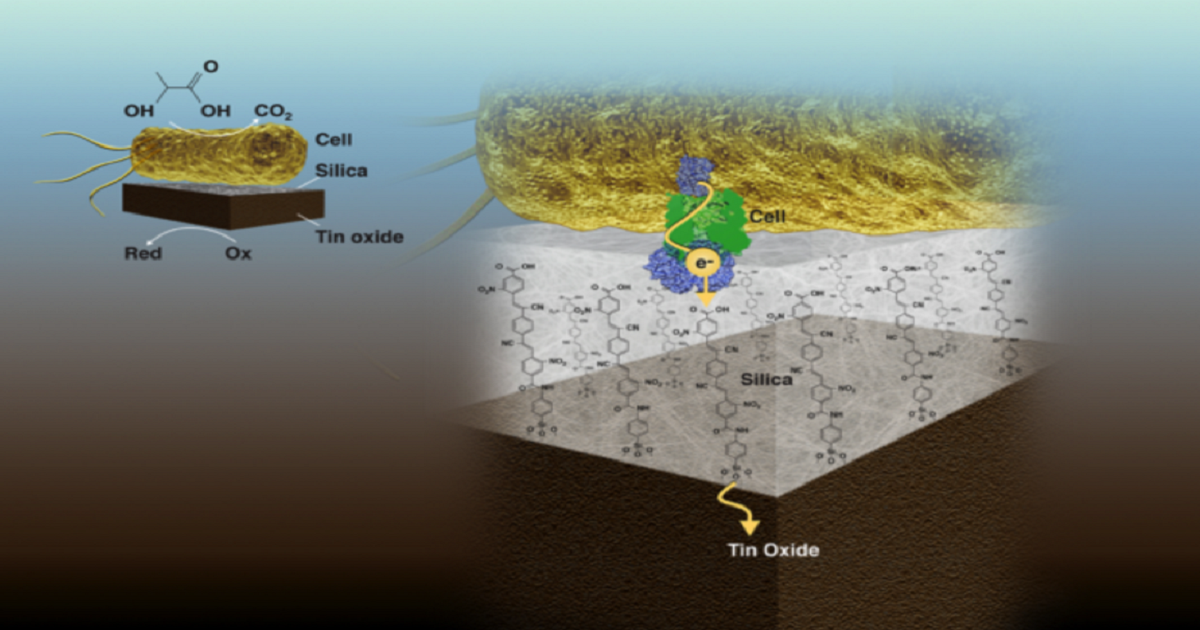Separate But Together: Ultrathin Membrane Both Isolates and Couples Living and Non-Living Catalysts
Lawrence Berkeley National Laboratory | June 27, 2018

Bioelectrochemical systems combine the best of both worlds microbial cells with inorganic materials – to make fuels and other energy-rich chemicals with unrivaled efficiency. Yet technical difficulties have kept them impractical anywhere but in a lab. Now researchers at Lawrence Berkeley National Laboratory (Berkeley Lab) have developed a novel nanoscale membrane that could address these issues and pave the way for commercial scale-up. The nanoscale membrane is embedded with molecular wires that simultaneously chemically separate, yet electrochemically couple, a microbial and an inorganic catalyst on the shortest possible length scale. This new modular architecture, described in a paper published recently in Nature Communications, opens up a large design space for building scalable biohybrid electrochemical systems for a variety of applications, including electricity generation, waste remediation, and resource recovery, in addition to chemical synthesis.